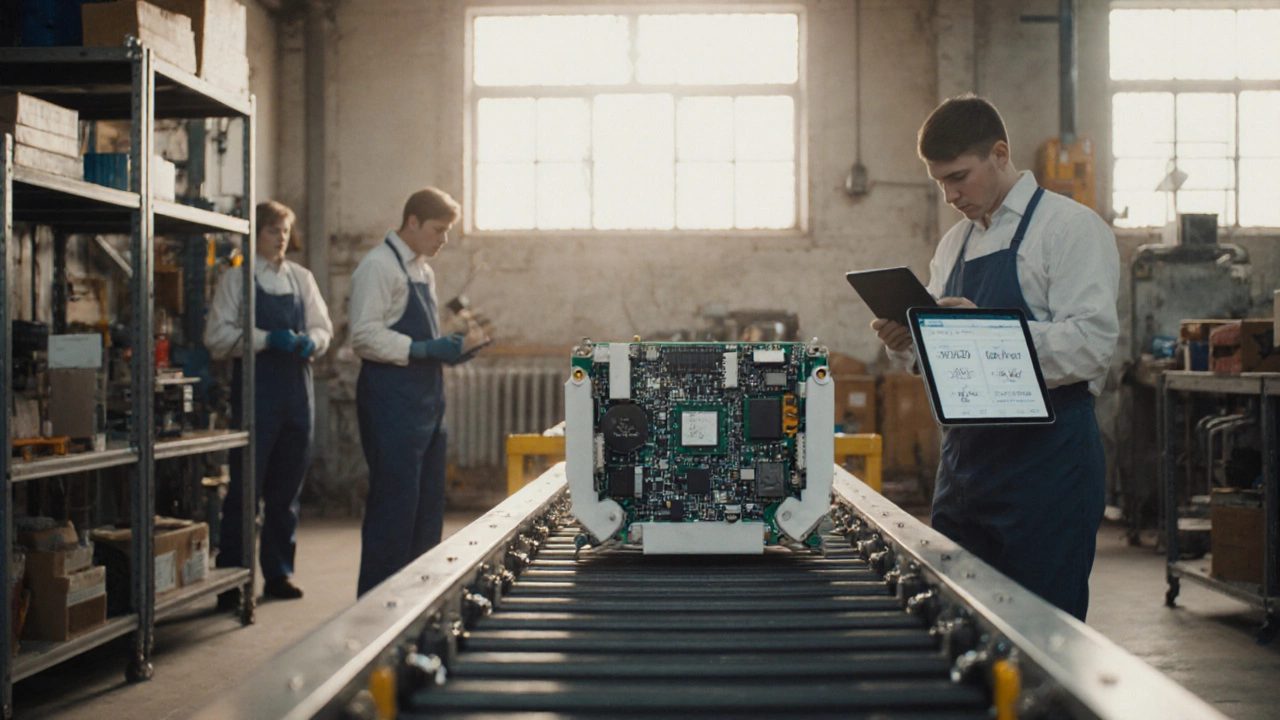Material Flow in Manufacturing: How It Powers Efficiency and Reduces Waste
When you think about how a product gets made, you might picture machines, workers, or blueprints. But the real hero behind every smooth production line is material flow, the movement of raw materials, components, and finished goods through every stage of manufacturing. Also known as material handling, it’s what keeps factories from turning into chaotic storage yards. If material flow is broken—say, parts sit too long in one spot or get lost between stations—everything slows down. Delays pile up. Costs rise. And quality suffers.
Good material flow isn’t just about moving stuff from point A to point B. It’s about timing, space, and sequence. Think of it like traffic on a highway: if cars (or in this case, components) are spaced right, lanes are clear, and exits are well-planned, traffic moves fast. In manufacturing, that means less idle time, fewer bottlenecks, and lower labor costs. Companies that nail material flow see faster cycle times, less scrap, and better on-time delivery. It’s not magic—it’s design. And it’s why factories in Surat, Pune, or even Detroit can outproduce others with the same machines.
Material flow connects directly to other key parts of manufacturing. For example, production line, the ordered sequence of workstations where a product is assembled or processed depends entirely on how smoothly materials arrive at each station. If your plastic pellets or steel sheets don’t show up when needed, the whole line stops. Then there’s logistics in manufacturing, how materials move within the factory and between suppliers, warehouses, and customers. Poor logistics means overstocked bins, missed shipments, or worse—production halts because a critical part never arrived. And let’s not forget supply chain optimization, the bigger picture of coordinating materials from raw source to final delivery. Even the best factory can’t fix a broken supply chain.
You’ll find this topic popping up in posts about plastic manufacturing, food processing, and even electronics assembly. Why? Because whether you’re making soap, circuit boards, or car parts, the rules of material flow stay the same: get the right thing, to the right place, at the right time. The best manufacturers don’t just react to delays—they design systems to prevent them. They use simple tools like color-coded bins, conveyor belts, or even just clear floor markings. No fancy software needed. Just smart layout.
What you’ll find below are real-world examples of how companies—some in India, some global—have fixed broken material flow and turned chaos into calm. You’ll see how small changes cut waste, how layout mistakes cost thousands, and how even a tiny tweak in how parts are moved can double output. No theory. No fluff. Just what works on the factory floor.
